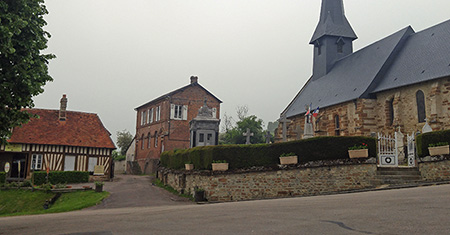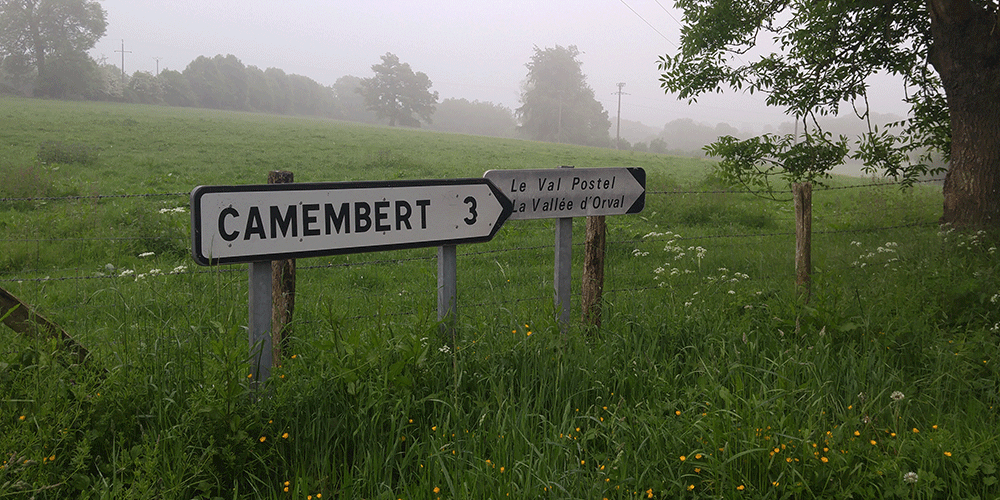A misty morning in Normandy. Green pastures and Normandy black and white cows grazing. To my surprise, the GPS is taking me on a country road that is so narrow that I am not sure what happens if a car comes in the other direction! The landscape is simply magical and my only regret is that I am not sharing this moment with my husband!
The village of Camembert is tiny. It doesn’t even have the traditional bakery and bar that seem to be features of every French village or town. Camembert has a church, a city hall, one house, and the museum of Camembert. That’s all. And it is so quaint! Who would have known that one of the most popular cheeses in the world was invented in a village which remains so quaint and tiny even today!
 But the museum is definitely worth the detour. The 2 videos – one presenting the history of the Camembert cheese and the other one on the method of making the cheese – are nicely done. I loved to learn what made Camembert such a popular cheese. Camembert, this soft, creamy cow’s milk cheese with a bloomy edible rind, was said to have been created by Marie Harel, in the late 1700s, in the nearby Manor of Beaumoncel, where she worked.
But the museum is definitely worth the detour. The 2 videos – one presenting the history of the Camembert cheese and the other one on the method of making the cheese – are nicely done. I loved to learn what made Camembert such a popular cheese. Camembert, this soft, creamy cow’s milk cheese with a bloomy edible rind, was said to have been created by Marie Harel, in the late 1700s, in the nearby Manor of Beaumoncel, where she worked.
But its wide acceptance is due to a few fascinating events (clever marketing no doubt)!
First, the development of railroads, in particular the line from Paris to Lisieux and Caen, helped the expansion of the cheese and its popularity with Parisians. A few years later, the grandson of Marie Harel gave a piece of cheese to Napoleon III, during one of his visits to Normandy, and the emperor was so enthusiastic that, from that time on, no meal was ever served at his residence The Tuileries without the prized cheese!
Later its round wooden box will not only protect the cheese but be a great communication tool.
The Camembert cheese finally became a truly national cheese when the cheese producers proposed to the military authorities in 1916 during WW1 to give one day a week of their production to the soldiers in the field. Without any doubt, they remembered that wonderful creamy cheese when they came back home from the war.
Interestingly Camembert only got its AOP (Appelation d’Origine Protégée) in 1983 and today only 6.5% of Camembert is actually produced in Normandy.
The visit ends with the tasting of 3 Camembert cheeses, with their distinctive flavor: from mild for the pasteurized one to a bit stronger for the thermised one and finally to the stronger raw milk Camembert.
As I am driving away from the historic village of Camembert, I take a large bite in the sandwich I prepared earlier: it is undoubtedly the freshest, creamy, best-tasting Camembert I ever ate! We’ve got to come back!
For more information:
- Video on the museum of Camembert: Visite du musée du Camembert
- Maison du camembert (and museum) in Camembert: Maison du Camembert (note that the close-by village of Vimoutiers also has a Musée du Camembert)
- Ranking of top cheeses in the world: The Very Best Cheese

